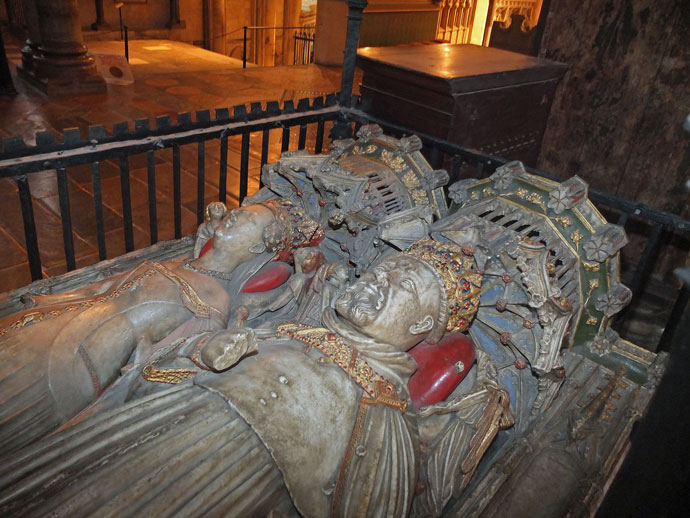King Henry IV (1367-1413) and Joan of Navarre (c.1370-1437
click here for further details on the life of Henry IV and here for further details on his tomb
Henry Bolinbroke’s tomb lies opposite that of his uncle, the Black Prince situated on the south side of the Trinity Chapel. The tomb contains the bodies of both the King and his second wife. Henry died in Westminster after a long illness and his body moved to Canterbury. The tomb was completed after his death and is thought to have been commissioned and paid for by Joan.
The tomb was opened in 1832 and a written record made by Dr Spry, one of the canons present at the time. Beneath the pavement lay the lead coffin of the King below the coffin of his wife. A small piece of the lead was removed from the head of the larger coffin. The King’s body was found to have been embalmed and lay bound with wrappers, when “…to the astonishment of all present, the face of the deceased King was seen in complete preservation”. The account, not for the squeamish, continues, “… the surveyor stated that when he introduced his fingers under the wrappers to remove them, he distinctly felt the orbits of the eyes prominent in their sockets”. The wrappers were replaced and the coffin reinterred. It was felt by the witnesses that the physical appearance of the corpse bore a strong resemblance to the tomb effigy.
The tomb is thought to have been constructed after Henry’s death and paid for by his wife; it is well described in the complementary CHAS entry. The tomb and effigies are expertly carved from alabaster. Christopher Wilson has drawn attention to stylistic similarities between this tomb and others to attribute the workmanship to the Chellaston alabasters, based in Derbyshire. The tester is of wood.

